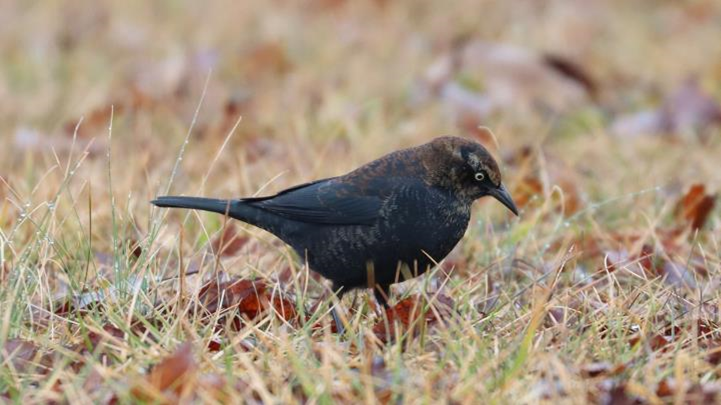Euphagus carolinus

Flecked with brown feather tips, the Rusty Blackbird is just as it sounds. But like painting a car, spring
sees them sport a new coat of shiny, all black feathers again.
Habitat
Look for Rusty Blackbirds in summer across the boreal forest in bogs, fens, and beaver ponds, from Alaska to Newfoundland. Winter takes them to the southeastern United States.
Food
Rusty Blackbirds feed mainly insects over summer, switching to acorns, pine seeds, and fruit, in winter.
Behaviour
A nest of twigs, grass, and lichens, mixed with wet plant material that hardens, is built in trees and shrubs near water. A clutch of 3 to 6 eggs in laid. Migrants returning north in spring are a dark, glossy black. But by the end of summer, after moulting, they have their rusty brown feathers showing for their return trip south.
Conservation
While Rusty Blackbirds are abundant overall, they have faced a steep, long-term decline in their
populations since the 1960s. Continuing this trend could see their population cut in half again in less than 20 years. Scientists are unsure of the exact causes of this decline and Rusty Blackbirds vast and remote breeding area makes study difficult. However, possible causes of this decline may be winter habitat loss from clearcutting, drainage, and conversion to agriculture.

